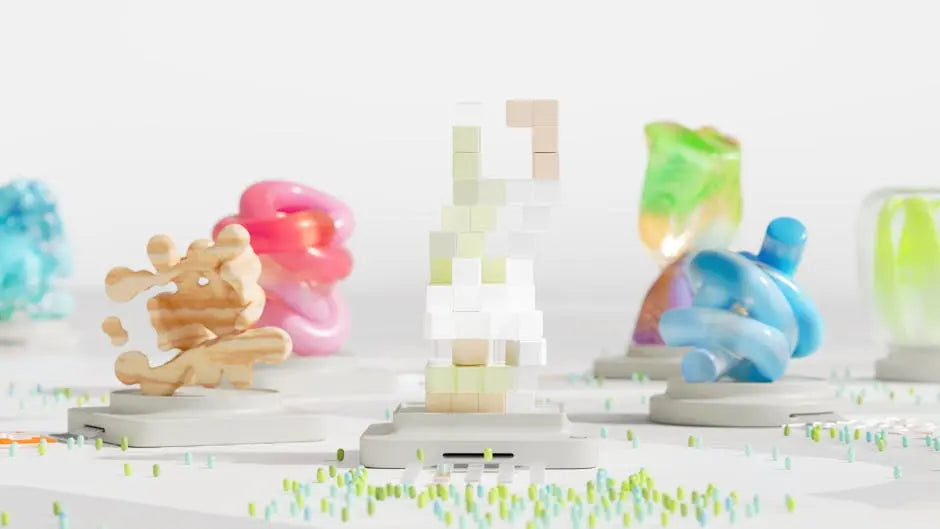My Cart
Your Cart is Currently Empty
FREE SHIPPING ON ALL ORDERS ABOVE $500


Modern art has long fascinated and challenged audiences with its unconventional forms and ideas. Among its many fascinating aspects are abstract sculptures. These sculptures don’t simply adorn galleries and public spaces; they carry deep cultural meanings and reflect the changing landscapes of artistic expression. In this blog post, we’ll explore how abstract sculptures have influenced and mirrored society’s evolution.
At first glance, abstract sculptures may seem perplexing. Unlike traditional sculptures, they don’t depict recognizable forms, which can be both intriguing and intimidating. In this section, we break down the complexities of abstract sculptures, making them more approachable and offering ways to appreciate their beauty and underlying messages.
Abstract sculptures defy conventional expectations by embracing form and space in innovative ways. They challenge viewers to move beyond what is immediately visible, prompting questions about interpretation and meaning. This type of artistry encourages us to focus on the sensations evoked rather than seeking a singular correct understanding. As a result, abstract sculptures serve as a bridge between tangible reality and abstract thought, a testament to the artist’s skill in manipulating dimensions and perspectives.
One fascinating aspect of abstract sculptures is their dynamic compositions and use of negative space. These elements not only enhance the aesthetic appeal but also invite viewers to engage actively with the work. For example, the careful placement of voids and solid forms encourages a dance of light and shadow. This interplay creates an ever-changing narrative as one moves around the piece. The result is a sculpture that evolves in perception with each new viewing angle, highlighting the fluidity and complexity inherent in abstract art.
The journey of abstract sculpture began in the early 20th century as artists sought new ways to express ideas beyond realistic representation. Influenced by movements like Cubism and Futurism, abstract sculptures became a form of artistic rebellion and innovation. Here, we delve into the historical context that gave rise to this transformative art form.
The early 20th century was a time of tremendous change, both socially and politically, which greatly impacted the art world. Artists like Pablo Picasso and Georges Braque pioneered Cubism, breaking away from traditional perspectives to depict subjects from multiple angles. This period of experimentation opened the door for abstract sculptures to flourish. Sculptors like Constantin Brâncuși and Naum Gabo embraced abstraction as a means to explore the invisible forces of nature, delving into themes of movement, light, and space. Their works emphasized the simplification of form and functionality over ornate details.
As World War I and its aftermath changed the world landscape, artists leaned into abstraction to cope with and comment on the chaos they witnessed. This era marked a significant departure from art as a mere aesthetic pursuit to art as a medium for intellectual discourse. The sculptures from this time revealed a deep engagement with the complexities of human existence, questioning the pre-established notions of beauty and reality. This shift paved the way for future artists to use abstract sculptures as a platform for expressing individualism and defying artistic conventions.
Abstract sculptures are more than just artistic creations; they are reflections of the times. Artists often use these sculptures to comment on social, political, and cultural issues, offering insights into the collective consciousness. This section explores examples of how abstract sculptures have mirrored societal changes and challenged the status quo.
In uncertain times, abstract sculptures often emerge as poignant societal barometers, capturing and reflecting the essence of cultural climates. Artists like Alexander Calder revolutionized the art of kinetic sculpture, crafting elegant mobiles that exhibit harmony in motion, mirroring the evolving rhythm of the 20th century. Calder’s work symbolized a break from static forms, representing adaptable structures in an era of mechanical advancements and modernity. Such creations echo the fluid state of societal transformations, serving as artistic metaphors for fluctuating ideologies and lifestyles.
In contemporary society, abstract sculptures continue to comment on prevalent issues, such as climate change, technological advancement, and global interconnectedness. Sculptors create pieces that evoke discussions on sustainability and ecology, utilizing recycled or unconventional materials to convey messages about environmental stewardship. Their work often invites public interaction, fostering communal discourse about shared global challenges and stimulating a collective consciousness.
One of the compelling aspects of abstract art is its open-ended nature. Each viewer can bring personal experiences and emotions to an abstract sculpture, creating a unique interpretation. We discuss how viewers interact with abstract works and the importance of personal connections in understanding these pieces.
Abstract sculptures engage viewers on an emotional level, prompting introspection and personal dialogue. Unlike representational art, which offers specific narratives, abstract works encourage an open-ended conversation between the observer and the piece. This interaction reveals insights about the observer’s emotions, biases, and values. Personal experiences shape one’s interpretation, transforming the artwork into a mirror reflecting individual consciousness.
The beauty of abstract sculptures lies in their ability to evoke diverse interpretations. This diversity enriches the cultural tapestry by valuing subjective experiences as part of a broader artistic conversation. Artistic spaces hosting these sculptures often become arenas for community engagement and dialogue, wherein viewers discuss varied interpretations and challenge preconceived notions. This opens the door to creativity and fostered understanding, bridging differences through shared artistic experiences.
From challenging artistic norms to reflecting the human experience, abstract sculptures play a crucial role in modern art. They invite viewers to interpret and question, providing a unique dialogue between the art and the observer. Whether found in a gallery or a bustling city square, these sculptures continue to inspire and provoke thought, solidifying their standing in the cultural fabric of modern art. Explore more about abstract art and its creators on Robin Antar’s official site.